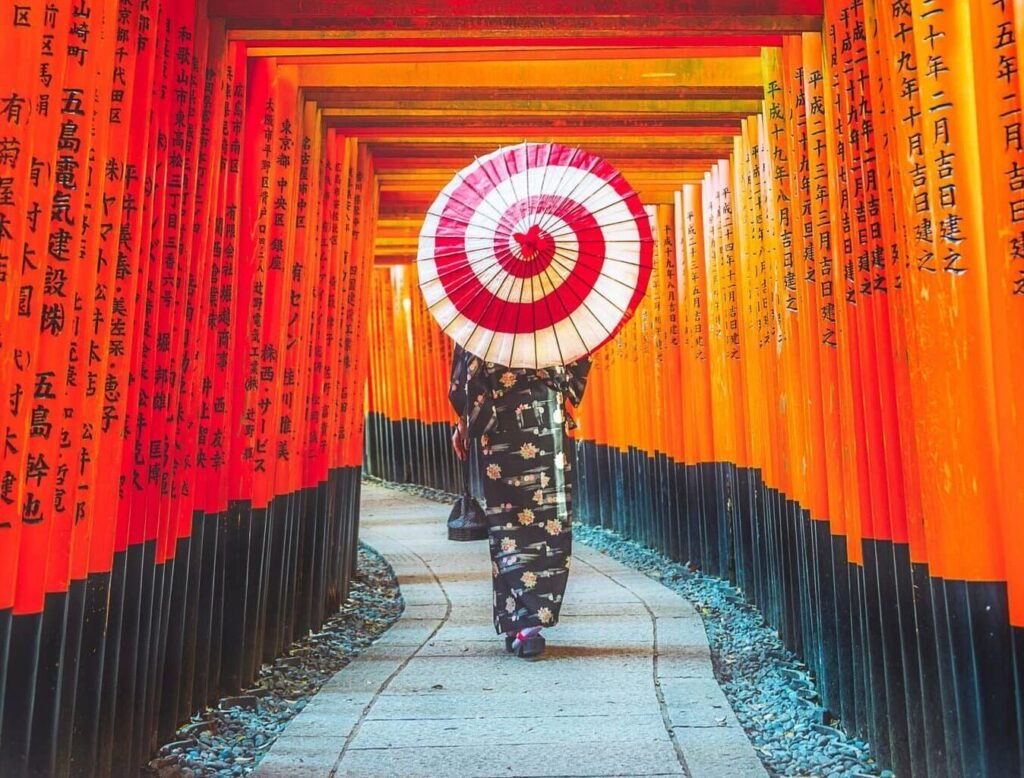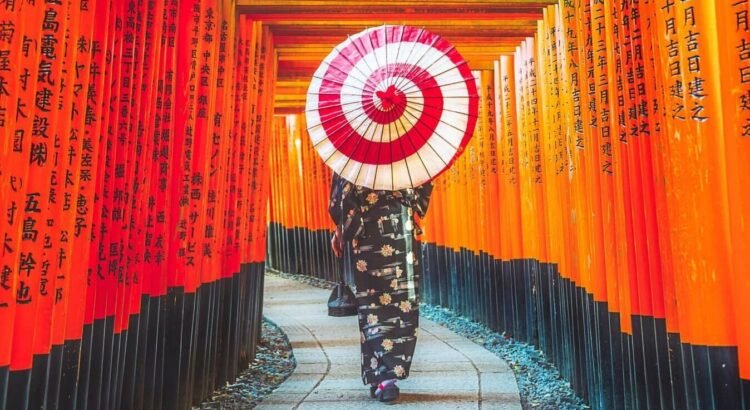
In an age where machines learn and cars drive themselves, there exists a metropolis that embodies the very essence of harmony between the ultra-modern and the ancient. This is a place where you can witness a humanoid robot conducting an orchestra one moment, and the next, find yourself walking barefoot on the smooth stones of a centuries-old temple courtyard, incense rising into the morning light. Welcome to Tokyo, Japan—the world’s most dynamic metropolis, where robotics meets ancient temples, and the future is deeply rooted in tradition.
A City of Contrasts
Tokyo is not a city that evolved in a linear path; it’s a sprawling organism that has grown through layers of time, blending epochs into a single, extraordinary experience. Walk a single block in neighborhoods like Asakusa, Akihabara, or Shibuya, and you’ll move across timelines—from the soft clang of prayer bells at a Shinto shrine to the bright neon buzz of vending machines selling everything from hot meals to virtual reality gear.
This constant contrast defines Tokyo’s identity. It is futuristic but reverent, hectic but meditative. It’s a city where robots bow politely, and humans still pause to greet the gods.
Akihabara: The Robot Heart of Tokyo
No exploration of modern Tokyo is complete without a dive into Akihabara, the city’s electric core. Originally famous for its black-market electronics post-World War II, Akihabara has evolved into the world’s most famous tech and geek culture district. Here, robotic innovation is not confined to labs; it’s part of daily life.
- Humanoid robots greet visitors in cafes and guide them through shopping experiences.
- At places like Miraikan (The National Museum of Emerging Science and Innovation) in nearby Odaiba, you can interact with robots like ASIMO or androids eerily similar to humans—creations that speak, express emotion, and even mimic human behavior.
- Robot restaurants put on laser-filled shows with larger-than-life mechs, neon lights, and thumping techno beats, creating an immersive, otherworldly experience.
In Akihabara, the dream of artificial intelligence isn’t just research—it’s entertainment, commerce, and culture rolled into one.
Yet, just a short ride away, the mood transforms completely.
Asakusa: Stepping into the Sacred Past
Enter Asakusa, and the futuristic buzz dims into a hushed reverence. Here lies Senso-ji, Tokyo’s oldest Buddhist temple, originally built in the 7th century. As you walk through the iconic Kaminarimon Gate, flanked by statues of the wind and thunder gods, you’re transported back to a time when samurai walked the streets and incense was currency for spiritual blessings.
Locals and visitors alike cleanse their hands at the purification fountain, offer coins, clap their hands in prayer, and draw fortunes written on slips of paper. Despite the passage of centuries, the rituals remain unchanged.
What’s remarkable is that in this ancient spiritual setting, modern infrastructure supports tradition. Elderly monks use tablets to track temple finances, while young apprentices film meditation sessions for YouTube. There’s even a digital map in several languages for international visitors, blending tech into spiritual pilgrimage.
This seamless fusion is Tokyo’s gift to the world: modernity in service of memory.
Innovation Woven into Everyday Life
Technology in Tokyo isn’t flashy for the sake of it—it’s embedded in the fabric of everyday life. Most homes and public places are powered by high-efficiency systems; energy-saving architecture is widespread. Trains are not only punctual to the second but are also run by AI-enhanced monitoring for optimal performance.
Want to see the city from above? Head to the Tokyo Skytree, the tallest tower in Japan and a marvel of engineering, standing at 634 meters. Its elevators ascend at speeds of 600 meters per minute, but once you reach the top, you’ll find yourself gazing over a city where tiled temple roofs still peek through the skyscrapers.
Even hospitality is automated in parts of Tokyo. Hotels with robotic check-ins, AI concierges, and room service delivered by smart machines are increasingly popular. Yet, you’ll still be greeted with the traditional bow and a warm “irasshaimase” as a gesture of human welcome.
In Tokyo, robots are efficient—but humans give soul.
Temple Gardens and Tech Parks: Finding Balance
A striking aspect of Tokyo is its dedication to balance. The city may lead the world in robotics and AI development, but it never strays too far from nature and spiritual grounding.
- Visit Meiji Shrine, tucked inside a vast forest in the heart of Tokyo, and you’ll hear only the rustle of leaves and distant chanting—despite being minutes from the bustling Harajuku station.
- In Shinjuku Gyoen National Garden, cherry blossoms bloom in perfect synchrony with surrounding sensors that monitor tree health using drones and climate data.
Parks like these are maintained with precision agriculture technologies but designed to mimic the serenity of Edo-era gardens. The past and future continue to walk hand in hand.
Robotics as Cultural Ambassadors
Tokyo doesn’t just create technology—it humanizes it. Robotics here isn’t about replacing humanity but enhancing interaction. Whether it’s robotic pets designed to provide comfort to the elderly or AI teachers assisting students with language learning, these machines often carry cultural values encoded in their design.
- In Odaiba, humanoid robots guide tourists with polite gestures and even crack jokes.
- At Tokyo Station, multilingual service bots help international travelers navigate the complexity of rail systems.
- In robot cafes, baristas programmed with local hospitality codes serve drinks while mimicking the grace of a human host.
These are not cold machines—they are warm extensions of a society that values kindness, efficiency, and respect.
Festivals and the Future
The true soul of Tokyo is most visible during its festivals. Whether it’s the high-energy Sumidagawa Fireworks Festival, the solemn beauty of Obon, or the high-tech marvel of teamLab Borderless exhibitions, there’s always a blending of tradition and innovation.
Imagine walking through a digital art exhibit where motion sensors trigger blooming flowers that follow your movement—then stepping outside into a lantern-lit shrine festival, with taiko drums echoing into the night.
This cohabitation of worlds is no accident—it’s Tokyo’s conscious design. It’s a city that believes tradition is not something to protect in isolation, but to evolve and share.
Culinary Traditions, High-Tech Dining
Tokyo is home to more Michelin-starred restaurants than anywhere else on earth, but food is democratic and diverse. You can have a $300 omakase meal or eat steaming ramen from a vending machine.
- Robot chefs now work in select ramen shops, creating bowls with precision timing and flavor calibration.
- Conveyor belt sushi is augmented with QR codes, and some restaurants use AR glasses to show customers the origins of each fish.
- Vegan and halal menus are digitally translated and personalized via AI nutrition apps, respecting both global guests and Japanese dietary philosophy.
Yet, walk into a tiny izakaya in Ebisu or a 5-seat sushi bar in Tsukiji, and you’ll meet chefs who have trained for decades, practicing culinary rituals passed down through generations.
Again, the robot assists—the master crafts.
A Metropolis of Mindful Modernity
Tokyo teaches us that the future doesn’t have to erase the past. It shows that modernity can be mindful, and that innovation, when guided by cultural values, can be deeply human.
This is a city that doesn’t just show you the future. It invites you to participate in it—whether you’re programming a robot companion, bowing before a temple altar, or sipping tea beneath a cherry blossom tree with 5G connection in your pocket.
Final Thoughts: Why Tokyo Is More Than a City
To experience Tokyo is to step into a vision of what the world could be. It is a city that refuses to choose between circuits and ceremony, between artificial intelligence and ancient insight. Instead, it blends them into an ever-evolving mosaic of possibility.
Here, the hum of a bullet train complements the rustle of bamboo. Here, a robot may serve your meal, but a shrine maiden will bless your fortune. Here, the most dynamic metropolis on Earth keeps its soul intact, and its history alive—even as it writes the future.
If there is one place where robotics meets ancient temples in perfect harmony, it is here. Tokyo. A city not defined by contradiction, but by coexistence—graceful, resilient, and endlessly fascinating.




